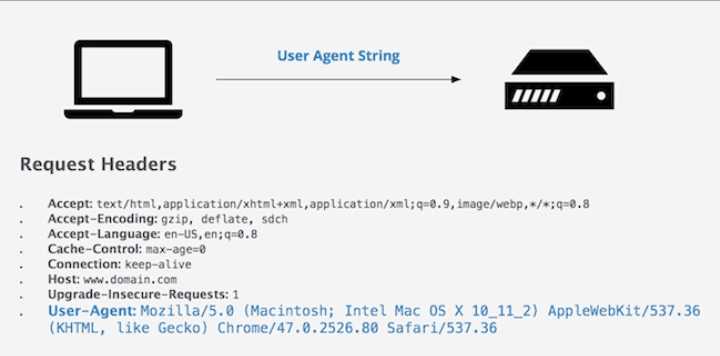Have you ever wondered how websites seem to know which operating system/Phone model you’re using? It’s not magic, but rather a sophisticated process that involves a combination of techniques to gather information about your device. In this article, we’ll delve into the methods websites use to detect your operating system and why they do it.
About Your Phone Model
Your phone model serves as the cornerstone of your digital experience, encapsulating a myriad of capabilities within its frame. From communication to entertainment, productivity to creativity, modern smartphones transcend mere communication devices, evolving into indispensable companions in our daily lives.
Phone General unique Specifications
At the heart of every phone model lies a treasure trove of specifications that dictate its performance and capabilities. Let’s delve into some key components:
| Component | Description |
|---|---|
| Processor | The brain of your device, responsible for executing tasks and running applications smoothly. |
| RAM | Determines the device’s multitasking capabilities, allowing you to switch between apps seamlessly. |
| Storage | Houses your apps, photos, videos, and files, influencing the device’s capacity for content storage. |
| Display | Showcases vibrant visuals and crisp details, enhancing the overall user experience. |
| Camera | Captures moments with clarity and precision, transforming your phone into a versatile imaging tool. |
Understanding these specifications empowers you to assess your phone’s performance and suitability for various tasks.
3. Exploring the Features
Beyond the specifications, your phone model boasts an array of features designed to streamline your digital experience. Here are some noteworthy features commonly found in modern smartphones:
- Biometric Security: Secure your device with fingerprint scanners or facial recognition technology, ensuring your data remains safeguarded.
- AI Assistants: Utilize virtual assistants like Siri, Google Assistant, or Bixby to accomplish tasks through voice commands, making your interactions with the device more intuitive.
- Enhanced Camera Capabilities: Leverage advanced camera features such as portrait mode, night mode, and AI scene detection to capture stunning photos in various conditions.
- Augmented Reality (AR): Immerse yourself in interactive experiences, from gaming to interior design, leveraging AR technology to blend the digital and physical worlds.
- Gesture Navigation: Navigate your device with ease using intuitive gestures, eliminating the need for traditional navigation buttons and maximizing screen real estate.
4. Optimizing Performance and Battery Life
To ensure optimal performance and longevity, consider implementing the following practices:
- Regular Software Updates: Keep your device up to date with the latest software releases, benefiting from performance improvements, bug fixes, and security patches.
- App Management: Streamline your app usage by uninstalling unused apps, clearing app caches, and optimizing background processes to conserve battery life and system resources.
- Battery Optimization: Enable battery-saving modes, adjust screen brightness, and limit background app refresh to extend your device’s battery life throughout the day.
5. Personalization and Customization
Make your phone model truly your own by exploring the plethora of customization options available:
- Wallpapers and Themes: Express your personality and style with a vast selection of wallpapers and themes, transforming the look and feel of your device.
- Widget Placement: Arrange widgets on your home screen to access essential information at a glance, enhancing efficiency and convenience.
- Icon Packs: Customize app icons with a variety of icon packs available on app stores, adding a personal touch to your device’s interface.
- Keyboard Customization: Tailor your typing experience with customizable keyboards, offering features such as predictive text, swipe typing, and emoji suggestions.
Read also:
- Xiaomi Redmi Note 12 Pro vs Xiaomi Redmi Note 12
- Xiaomi Redmi 13C 5G: Full Review and Specifications
- Xiaomi Redmi 13C: its Unique Features, Price and Specifications
- Samsung Galaxy F14 4G: In-Depth Review and Specifications
How Websites Identify Your Phone Model/Operating System
- User-Agent Strings:
When you visit a website, your web browser sends a request that includes a “User-Agent” string. This string contains information about your browser, device, and operating system. Websites analyze this string to determine what type of device and operating system you’re using.
Example of a User-Agent String
| User-Agent String |
|---|
| Mozilla/5.0 (Windows NT 10.0; Win64; x64) AppleWebKit/537.36 (KHTML, like Gecko) Chrome/88.0.4324.150 Safari/537.36 |

- JavaScript:
Websites often use JavaScript to gather additional information about your device. JavaScript can detect features specific to certain operating systems, such as the presence of certain plugins or hardware capabilities. By running scripts on your browser, websites can extract more detailed information about your system. - IP Address Geolocation:
While not directly related to detecting operating systems, IP address geolocation can provide clues about the location and possibly the type of device you’re using. Websites can use this information in conjunction with other methods to make educated guesses about your operating system.

- Browser Fingerprinting:
Browser fingerprinting is a technique that combines various attributes of your browser and device to create a unique identifier, or “fingerprint.” This fingerprint can include details such as your browser version, screen resolution, and operating system. Websites use this fingerprint to track users and personalize their experience.

- Analyzing HTTP Headers:
HTTP headers contain additional information about your request, including details about your operating system. Websites can analyze these headers to extract data such as the type of browser and operating system version you’re using.
Why Websites Need to Know Your Operating System
You might be wondering why websites go to such lengths to detect your operating system. There are several reasons:
- Personalization: Knowing your operating system allows websites to tailor the content and layout to provide a better user experience.
- Compatibility: Websites can optimize their content to ensure compatibility with your device and operating system.
- Security: Detecting the operating system helps websites implement security measures tailored to specific platforms, such as recommending antivirus software or warning about known vulnerabilities.
While it may seem like magic, the process of detecting your operating system is based on a combination of technical methods and data analysis. Next time you visit a website, remember that it’s not just the content that you search for. it’s also the way it’s delivered based on your operating system.

